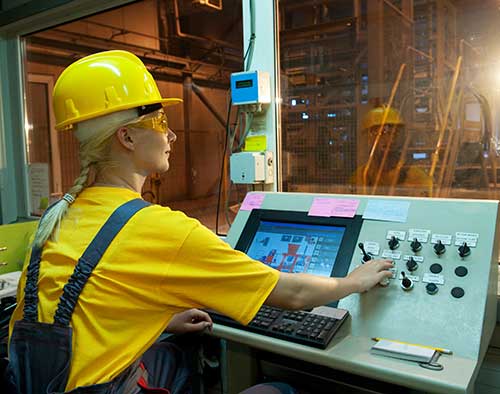
How well do you know your weak link?
If you operate a continuous manufacturing process, then you know the importance of maintaining your systems’ operational performance. No doubt you gave a considerable amount of thought to your system architecture, understanding the critical parameters for producing the highest possible quality product.
You pay attention to safety, process control, reliability, and quality through constant monitoring of key performance indicators to oversee the health of your system in order to assure your products’ quality.
But how well do you really know and understand your critical few key subsystems, and how closely do you monitor them?
Conventional monitoring and control processes generally call for low sampling rates once the system is operational and up and running. Programmable Logic Control (PLC) systems generally provide the appropriate level of detail, and do so with additional benefits of data history, connectivity to ERP and MRP systems, and safety technologies.
But what about the deeper dive, sensing the critical path elements of the system that, should they fail, cause a system-wide disruption?
When a continuous process operation shuts down, you know that expenses go through the roof: waste is created, equipment can get damaged, schedules get compromised, and labor costs skyrocket. Being able to identify those most critical-few subsystems and treat them differently from the rest of your system can save significant time and money.
For instance, identify that pump, mixer, or blending station or other critical element. Proactively instrument it and understand its optimal operating conditions and the profiles that will indicate degradation or performance risk; this can yield significant savings and stress. Know whether and how you can or should measure temperature, vibration, humidity, flow, etc. and incorporate that knowledge into your system model. This will give you early indicators of wear on subcomponents or on the system in general, pointing you to predictive maintenance and/or replacement needs.
Identifying those and deploying capabilities with perhaps higher sampling frequencies and the ability to collect, record, and synthesize huge volumes of data to either predict or diagnose a failure can be invaluable. Seeing an event coming in advance, and being able to study a large quantity of data collected immediately before, during, and after an event can be priceless. It provides insight and enables specific actions that otherwise would be done entirely differently, with likely more expense, risk and downtime. With all of the operations that come with an unplanned shut down, such as labor overruns, additional cleanings-in-place (CIP), changeovers, and additional maintenance, the value proposition is tremendous for instrumenting and actively managing these critical few assets in any process automation system.
Data acquisition and control systems, which are often used in test and measurement systems in test labs, can provide the extra focus on core subsystems, and provide management and operations teams with the valuable insights that can keep operations running most smoothly and efficiently. Looking to leverage the robust process control systems that keep the rest of the system operating smoothly, adds only a token incremental cost and delivers a tremendous amount of value in both tangible cost-efficiency as well as peace of mind.
